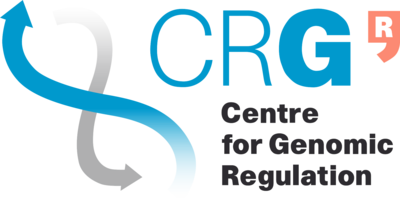Difference between revisions of "BIST Introduction to Statistics 2016"
From Bioinformatics Core Wiki
Jponomarenko (Talk | contribs) (Created page with "__TOC__ == BIST "Introduction to Biostatistics" Course == ==== Online Resources ==== * Nature Web-collection "Statistics for Biologists": http://www.nature.com/collections/qg...") |
Jponomarenko (Talk | contribs) |
||
| Line 15: | Line 15: | ||
* VIB "Basic statistics in R" course. Tutorial and links. https://www.bits.vib.be/index.php/training/180#download | * VIB "Basic statistics in R" course. Tutorial and links. https://www.bits.vib.be/index.php/training/180#download | ||
| − | + | * [https://www.edx.org/course/introduction-r-programming-microsoft-dat204x-0 Self-paced online course from Microsoft "Intro to R programming"] | |
| − | * | + | |
| − | + | ||
| − | + | ||
| − | + | ||
| − | + | ||
| − | + | ||
| − | + | ||
| − | + | ||
| − | + | ||
| − | + | ||
| − | + | ||
| − | + | ||
| − | + | ||
| − | + | ||
| − | + | ||
| − | + | ||
| − | + | ||
* Self-paced online course "Introduction to Cloud Computing" https://www.edx.org/course/introduction-cloud-computing-ieeex-cloudintro-x-0 | * Self-paced online course "Introduction to Cloud Computing" https://www.edx.org/course/introduction-cloud-computing-ieeex-cloudintro-x-0 | ||
* Self-paced online course from Microsoft "Data Science and Machine Learning Essentials" https://www.edx.org/course/data-science-machine-learning-essentials-microsoft-dat203x-0 | * Self-paced online course from Microsoft "Data Science and Machine Learning Essentials" https://www.edx.org/course/data-science-machine-learning-essentials-microsoft-dat203x-0 | ||
Revision as of 09:04, 28 April 2016
BIST "Introduction to Biostatistics" Course
Online Resources
- Nature Web-collection "Statistics for Biologists": http://www.nature.com/collections/qghhqm
- Self-paced online UC Berkeley courses
- Online book recommended by the above courses http://www.stat.berkeley.edu/~stark/SticiGui/
- Upcoming (Feb 2, 2016) MIT course Introduction to Probability - The Science of Uncertainty. https://www.edx.org/course/introduction-probability-science-mitx-6-041x-1
- Self-paced online course "Explore Statistics with R" https://www.edx.org/course/explore-statistics-r-kix-kiexplorx-0
- "An Introduction to Statistical Learning with Applications in R" from Stanford http://www-bcf.usc.edu/~gareth/ISL/
- 100 Statistical Tests.pdf - ResearchGate - just search Google to get a link
- VIB "Basic statistics in R" course. Tutorial and links. https://www.bits.vib.be/index.php/training/180#download
- Self-paced online course from Microsoft "Intro to R programming"
- Self-paced online course "Introduction to Cloud Computing" https://www.edx.org/course/introduction-cloud-computing-ieeex-cloudintro-x-0
- Self-paced online course from Microsoft "Data Science and Machine Learning Essentials" https://www.edx.org/course/data-science-machine-learning-essentials-microsoft-dat203x-0
- Self-paced online courses in the seria "Data Analysis for Life Sciences" from Harvard:
- 1: Statistics and R https://www.edx.org/course/data-analysis-life-sciences-1-statistics-harvardx-ph525-1x
- 2: Introduction to Linear Models and Matrix Algebra https://www.edx.org/course/data-analysis-life-sciences-2-harvardx-ph525-2x
- 3: Statistical Inference and Modeling for High-throughput Experiments https://www.edx.org/course/data-analysis-life-sciences-3-harvardx-ph525-3x
- 4: High-Dimensional Data Analysis https://www.edx.org/course/data-analysis-life-sciences-4-high-harvardx-ph525-4x
- 5: Introduction to Bioconductor: Annotation and Analysis of Genomes and Genomic Assays https://www.edx.org/course/data-analysis-life-sciences-5-harvardx-ph525-5x
- 6: High-performance Computing for Reproducible Genomics https://www.edx.org/course/data-analysis-life-sciences-6-high-harvardx-ph525-6x
- 7: Case Studies in Functional Genomics https://www.edx.org/course/data-analysis-life-sciences-7-case-harvardx-ph525-7x
- Self-paced excellent course from MIT "Introduction to Biology - The Secret of Life" https://www.edx.org/course/introduction-biology-secret-life-mitx-7-00x-2
